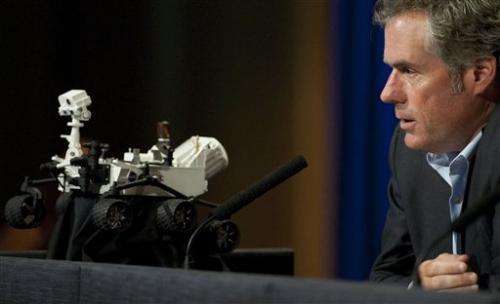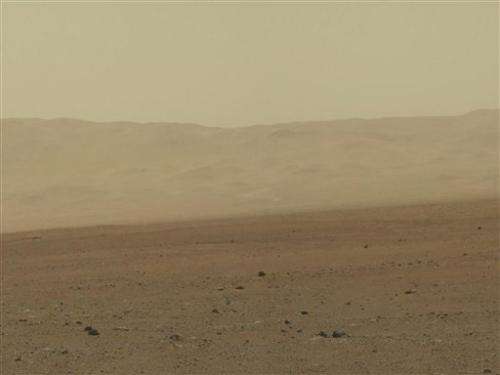NASA's mega-rover landed on Mars. What's next?

(AP) — After a spectacular landing on Mars, the rover Curiosity wasted no time embracing its inner shutterbug, delighting scientists with vistas of Gale Crater complete with sand dunes, mountain views and even haze.
Now what?
The nuclear-powered, six-wheel Curiosity is on a quest to learn whether the Martian environment could have been favorable for microbial life. Before it can drive, it has to slog through weeks of health checkups. Since it's the most complex spacecraft ever sent to the red planet, engineers want to make sure it's in tip-top shape before they hand over the keys to scientists. It already has done a cursory check of its 10 science tools, but more tests are needed. This weekend, its computers get a software update — a process that will last several days.
When can we watch a movie of the touchdown?

The footage is recorded and stored on board Curiosity and will be downloaded as time allows. It sent back a low-quality video and several high-resolution frames that captured the last few minutes of the descent, providing a sense of a spacecraft landing on another planet. In the video, the protective heat shield pops off and tumbles away. It ends with billowing plumes of dust as Curiosity was safely delivered to the surface.
What are the first impressions of Gale Crater?
The mission's chief scientist John Grotzinger said it was like staring at California's Mojave Desert. The landing site is pebbly with sand dunes nearby and mountains off in the distance. A curtain of haze hung over the site. Curiosity's destination is Mount Sharp, a 3-mile (4.8-kilometer)-high mountain rising from the center of the crater floor near the equator. Observations from space reveal the base of the mountain shows signs of past water — a good place to hunt for the chemical ingredients of life.
How did last Sunday's landing go?
Curiosity's performance was pretty much on target with expectations. Because it weighed nearly 2,000 pounds (900 kilograms), it had to be gently lowered to the surface — a routine NASA had never tried before. A preliminary reconstruction indicates it landed 1 1/2 miles (1 kilometer) downrange from the bull's-eye.
How many rovers are now on Mars?
Curiosity joins the long-running Opportunity, which has been exploring craters in Mars' southern hemisphere since 2004. Opportunity's twin, Spirit, fell silent in 2010 after getting stuck in a sand trap. Curiosity's prime mission lasts two years.
Copyright 2012 The Associated Press. All rights reserved. This material may not be published, broadcast, rewritten or redistributed.





















